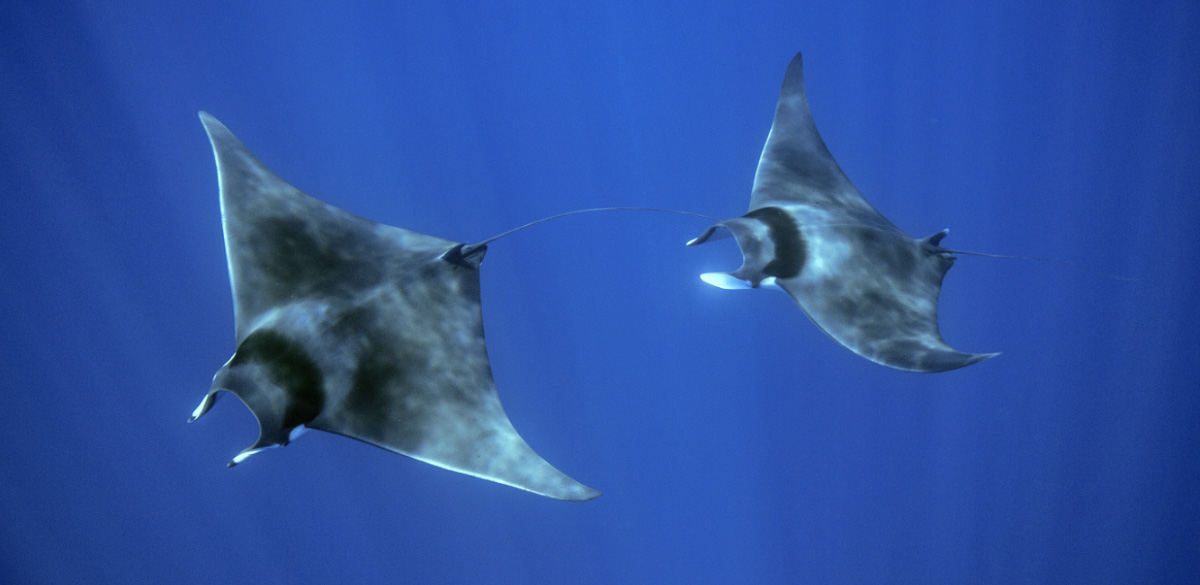The Balearic Islands, known for their stunning coastlines and azure waters, are also a hotspot for a hidden, urgent battle – the fight to save sharks and rays from extinction. In a groundbreaking move, the Conselleria d’Agricultura, Pesca i Medi Natural (Ministry of Agriculture, Fisheries, and Natural Resources) has launched the ‘Balearic Strategy for Sharks and Rays’ project, bringing together an expert team of scientists, conservationists and fishing industry veterans to turn the tide for these vital marine creatures. Among them are scientists from the Spanish Institute of Oceanography and conservationists from organisations such as Save the Med, Marilles, and SharkMed.
Sharks and rays: guardians of our oceans
The Balearic Sea is home to a staggering 32 species of sharks, 27 species of rays, and 1 species of chimaera. Yet, despite their importance to the marine ecosystem, over half of these species are teetering on the edge of extinction. According to the International Union for Conservation of Nature’s (IUCN) Red List, by 2019, 53% of Mediterranean sharks and rays were already endangered due to overfishing, habitat destruction, pollution and the harmful myths surrounding these misunderstood predators.
Thanks to new strategies, technology and research, the Balearic Islands are now stepping up to protect these guardians of the ocean.
SharkBRUV: studying sharks in action
One of the most exciting innovations in this effort is the SharkBRUV project, a collaboration between Save the Med and SharkMed. This cutting-edge initiative uses Baited Remote Underwater Video (BRUV) boards to observe sharks in their natural habitat without interference. With 24/7 video data capturing, scientists can quantify the number of species present and monitor their health and behaviour, and assess the threats they face. Beyond capturing data, the scientists also observed different shark species through the BRUVs as the Bluntnose six-gill sharks (Hexanchus griseus) and Blue sharks (Prionace glauca). In the case of Blue sharks, they were also observed directly through diving.
By providing real-time insights into the underwater world of sharks, the SharkBRUV project helps dismantle myths about their supposed danger to humans, shifting the narrative towards the urgent need for conservation of elasmobranchs. Offering a window into the incredible underwater world right below the surface of the Mediterranean is a game-changer for yacht enthusiasts and ocean lovers.
The Manta Project: protecting the graceful spinetail devil ray
Another crucial initiative is the Manta project, dedicated to the endangered Spinetail devil ray (Mobula mobular). As filter-feeders, these majestic rays play a vital role in marine ecosystems They are now under threat mainly due to high by-catch mortality, as well as plastic and other types of pollution. In addition to man-made threats, it is difficult for the Spinetail devil ray population to recover due to its low reproductive rate. With the Balearic Islands serving as a summer aggregation hotspot, the region is perfect for studying their migration, behaviour, and how human activities impact them.
Using satellite tagging, researchers from Save the Med and SharkMed are tracking the rays’ movements to inform vital conservation efforts. This research is not only important for protecting the species but also for ensuring the continued biodiversity of the Mediterranean. With the help of the satellite device, important behavioural data of the tagged mantas were recorded, including dives reaching depths of more than 600 metres and trajectories extending as far as the Gulf of Genoa in the Ligurian Sea, approximately 650 km from the Balearic Islands.
New study to explore shark and ray populations in Cabrera National Park
In parallel, SharkMed and the Save the Med Foundation will soon kickstart the Sharks and Rays Project in the Cabrera Archipelago Maritime – Terrestrial National Park (PNMTAC) conducting a study of their diversity, abundance, seasonality, and movement patterns using non-invasive techniques over the next two years (2024-2025). The aim is to better understand the current situation of various species of sharks and rays within the Cabrera National Park.
The goal of this project is to generate scientific information on the presence of pelagic and demersal elasmobranchs in the study area, including their density indexes and seasonality, while also gathering information about their trophic ecology and movement patterns. Additionally, it seeks to understand habitat use by the Spinetail devil ray (Mobula mobular) and its migration routes. This will shed light on the limited information available to date on the biology and ecology of these species and the threats they face, allowing this information to be cross-referenced with risk maps in an effort to minimise the interactions between these species and the threats they are exposed to.
The study is part of the Recovery, Transformation, and Resilience Plan (PRTR), funded by the European Union (Next Generation EU) through a grant from the Conselleria d’Agricultura, Pesca i Medi Natural. The Marilles Foundation is providing special support for this project by advancing the necessary funds to cover expenses until the grant can be settled.
Why the nautical community should care
For those passionate about yachting and the sea, these projects represent more than just scientific research – they’re about protecting vital ecosystems which all living beings depend on. Healthy populations of sharks and rays are critical to the balance of marine life. By supporting these efforts, the nautical community can play a part in ensuring the Mediterranean remains a thriving, vibrant sea for generations to come.





























0 Comments